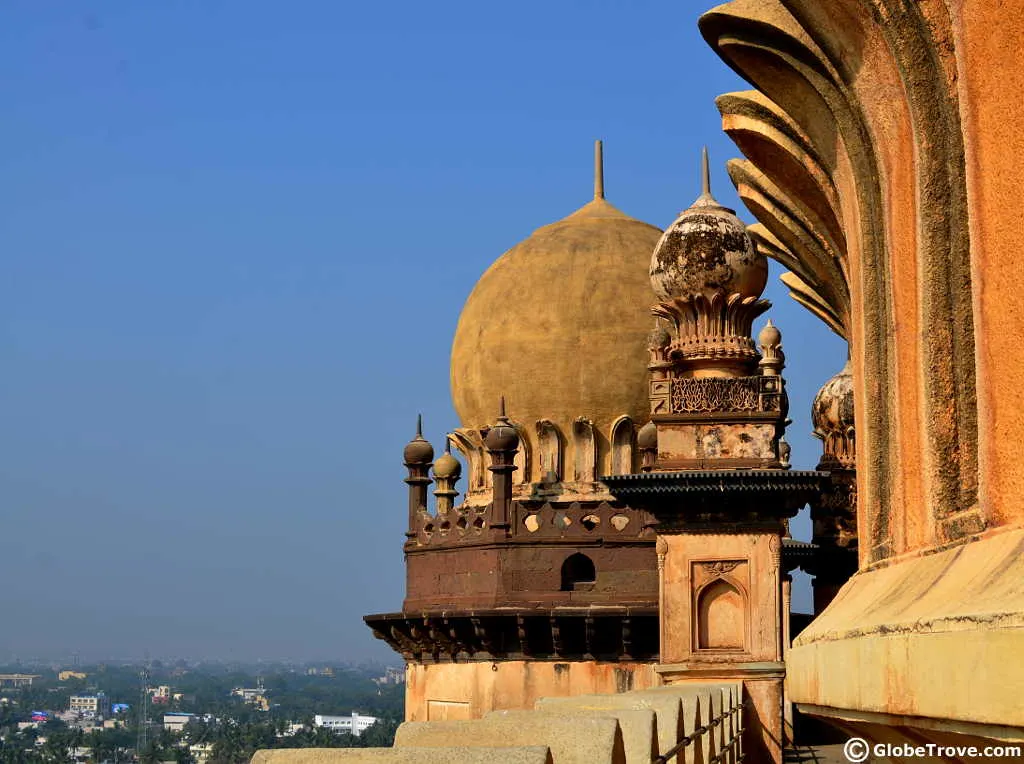There are so many parts of India that do not receive the due attention that they should. I strongly believe that Bijapur (also known as Vijayawada) is one of those places. Situated in Karnataka, India, Bijapur is steeped in history and makes a perfect pick for one of your Indian holidays. In fact, there are 4 intriguing historical places to visit in Bijapur that you can’t miss if you are in the area!
The downside is that getting there can be quite tough because the state of the roads isn’t too good.
The current city of Bijapur seems to have grown into the ancient town so much so that sometimes it is hard to distinguish which are the ancient monuments and which buildings are currently in use.
A day in the city however will help you cover the most important structures easily. Let’s look at all the historical places to visit in Bijapur, shall we?
1. Gol Gumbaz
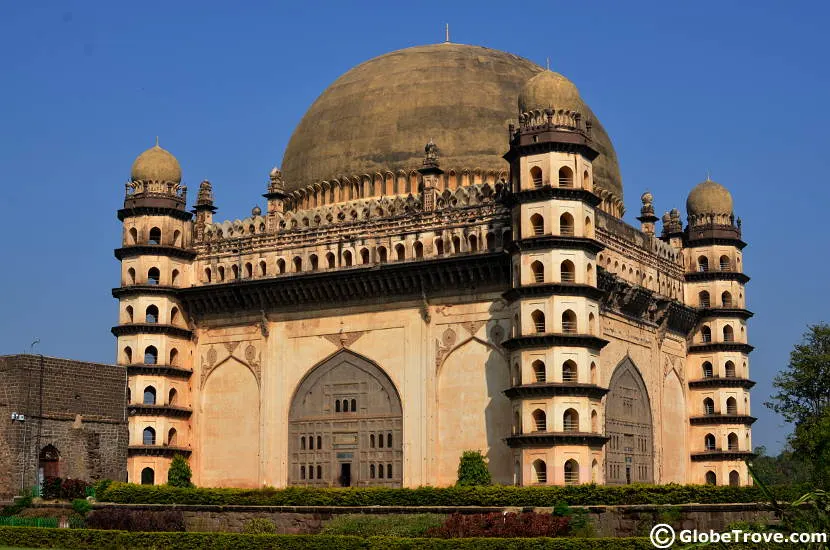
The view of one of the Minarets of the Gol Gumbaz from up close.
One of the most famous historical places to visit in Bijapur is the Gol Gumbaz. The square shaped building with the high arched dome is the resting place of Adil Shah (a famous Indian king) who was the Sultan of the area at that time.
The mausoleum is an impressive in so many ways but one of the most fascinating facets to it is the architecture. As you enter and look around, you will notice that there is symmetry in almost every detail. The stone tombs lie at the centre of the Gol Gumbaz.
One of the highlights is that visitors are allowed to climb up the steps in the minaret and see the dome up close. I won’t go into detail about Gol Gumbaz because we have detailed post about it already up. You can read it an see why it is one if the top historical places to visit in Bijapur.
RELATED ARTICLES: The Gol Gumbaz (A Walk Back In Time)
2. Ibrahim Rouza
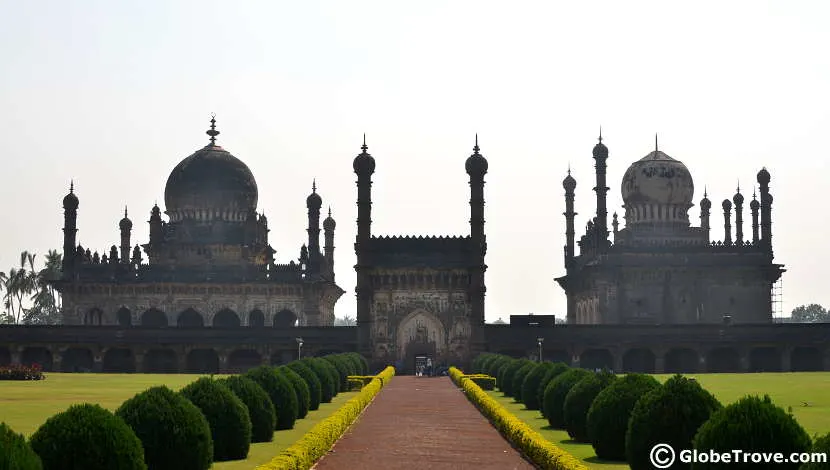
You can see why the Ibrahim Rouza is one of the historical places to visit in Bijapur.
The Ibrahim Rouza is another one among the numerous historical places to visit in Bijapur. This monument contains both a mausoleum as well as a mosque. The mausoleum houses the tomb of Ibrahim Adil Shah II.
One of the first things that you notice about the Ibrahim Rouza is the symmetry that exists between both the mausoleum and the mosque. As you approach the structure, the intricacy of the carvings really comes into focus.
Despite the crowds, the Ibrahim Rouza manages to remain a place of calm and a thing of beauty. It feels like you passed through an entrance to another world. Quite frankly, the monument is our favourite on the list of historical places to visit in Bijapur.
RELATED ARTICLES: Ibrahim Rouza: A Part Of Bijapur Frozen in Time
3. Gagan Mahal
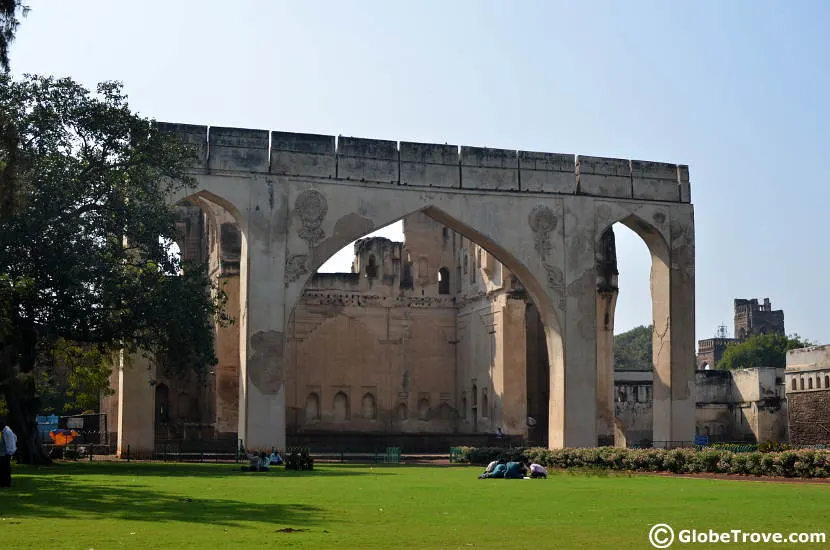
The court and the residence of the Sultan of Bijapur
The Gagan Mahal was the residence of the king Adil Shah. While it may look like just a skeleton today, the Gagan Mahal is considered to be on the first large scale residences of the Mughal empire.
It was also used as the durbar hall. That means that the king used to hold his court there. The Gagan Mahal doesn’t look as impressive as it is meant to be. That is probably because it dulls in comparison to the many mausoleums in the vicinity.
Despite that, the Gagan Mahal is looked after and well manicured walls greet you as you walk to it. A number of the locals sit and converse in the fading sun while enjoy the view of the monument.
4. Bara Kaman
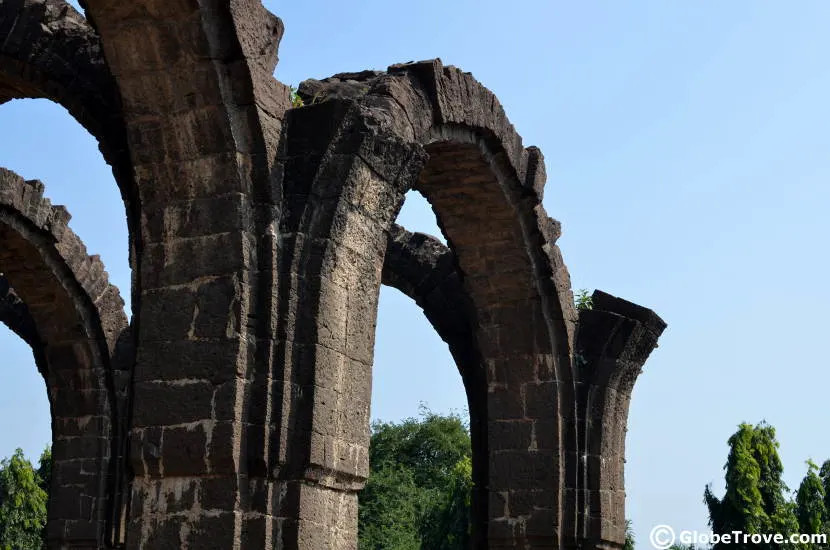
The standing arches of the Bara Kamam is one of the iconic historical places to visit in Bijapur.
The Bara Kaman is an unfinished mausoleum. This is the mausoleum of Ali Adil Shah II. The mausoleum was intended to have twelve arches but only two of them were completed. Ali Adil Shah intended that the Bara Kaman would house his remains as well as those of his wives.
Unfortunately for him, he was murdered by his father Muhammad Adil Shah who was afraid that the Bara Kaman would lessen the glory of the Gol Gumaz. The Bara Kaman is not as well preserved as the Gol Gumbaz and the Ibrahim Rouza but it is protected. While the other monuments stand proud in all their glory, the Bara Kaman attracts few to its ruins.
There are numerous historical remnants and ruins that can be seen throughout the city. Stones have been plundered and some of them are in disarray. We visited the Bijapur fort but as we wandered inside the stench of urine overwhelmed us so much that we were forced to turn back.
The above four monuments are relatively well looked after, and we would suggest visiting them.
All said and done, Bijapur is a city that looks tantalizingly stuck between the past and the present. Wherever you stop in the city, you will see signs of an impressive empire. The inhabitants of the city have moved on to more modern accommodation making the city a mix of the past and the present. It’s a place that you can spend a few days exploring and one that sadly few venture too.
Have you been to Bijapur? What did you like about the city? We would love to hear about your experiences in the comments below.
*This post contains Affiliate links

